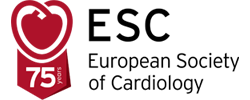This report was prepared by:
Dr Omar Msalam MD, PhD, FESC, FACC
Head of CVD Prevention of the Libyan Cardiac Society
National CVD Prevention Coordinator for Libya
The report was prepared by Dr Omar Msalam with the assistance from Dr Khaled Ayad Ellafi DIM, MSc, MRCP, FESC, FACC, President of Libyan Cardiac Society.
Documents to download
Health care
Libya’s health care system has come a long way since 1951, when it started functioning with meagre resources: 14 hospitals (1,600 bed capacity) and a small number of health centres.
Currently health system in Libya is composed of a public and private sector. The public sector is the main health services provider. Health care including preventive, curative and rehabilitation services are provided to all citizens free of charge, at present, almost all levels of health services are decentralized except central hospitals and specialized centres.
The Ministry of Health MOH operates through an administrative and a technical workforce and has an extensive central organizational structure, headed by the Minister of Health.
Read the full report
Risk factors
Selection of main risk factors:
| Risk factor | Total | Male | Female |
|---|---|---|---|
| Daily smokers (%) | 23.8 | 47.6 | 0.1 |
| Consumption of less than 5 servings of fruits and/org vegetables on average per day (%) | 97.4 | 97.0 | 97.9 |
| low levels of activity (<600 metabolic equivalent minutes per week) (%) | 43.9 | 36.0 | 51.7 |
The complete table of all main risk factors according to the STEPS study in 2009 is available in the full report.
Main actors
The main actors in CVD prevention in Libya are:
- the Ministry of Health MOH
- The National Centre for Disease Control NCDC
- Libyan Cardiac Society LCS
- Cardiac Centers, Public Health department
Cardiovascular preventive care in Libya is mainly delivered both by general practice doctors who are employed at primary healthcare (PHC) centres, polyclinics and by cardiologists, who are employed at the state medical services (hospitals, out-patient clinics) as well as in private medical centres or clinics.
Read the full report.
Prevention activities
The Libyan Cardiac Society (LCS) is participating with a number of initiatives in the:
- World heart Day
- World hypertension Day
- World Diabetes Day
- World Without Tobacco Day
Other initiatives:
- The health number: In 2007 the Libyan Cardiac Society succeeded to set a number to summarize the advices for prevention of cardiovascular disease and Non Communicable Diseases (NCDs) in an easy way, called “the health number”, which was posted in the World Heart Federation web site.
- LIBYA as Symbol for health information:
L for low sugar low salt and low fat.
I for increase Fruit and vegetables.
B for Body weight ideal .Blood pressure controlled.
Y for yes to physical activity.
A for avoiding smoking and alcohol.
This symbol has been accepted by the World Heart Federation.
Read the full report.
Cardiac Rehabilitation
Cardiovascular Rehabilitation (CR) unfortunately still is very basic and not well disseminated at present due to insufficient centres and expertise. It is available only in the main cardiac centre and cardiothoracic department and provided by physiotherapist and dietician. There are no complex CR programs or specialised CR centres in the country.
The National Program of prevention and control of cardiovascular diseases should include measures for the implementation of rehabilitation programs. CR is recommended after cardiovascular surgery and after acute myocardial infarction stable coronary artery disease, peripheral arterial disease, heart failure, and arterial hypertension.
Read the full report.
Aims for the future
The key actions for the next 5 years are:
- Improvement of CVD epidemiology and statistical analysis methods, as well as piloting of various incentives for furtherance of prevention in health care, including the primary care level.
- The need to study the experience of other countries which have gone through the same transition of societal development and health care restructuring.
Libyan Cardiac Society will do all the possible efforts to convert the dream to reality.
Read the full report to find out about the strategy, the need, the plans and the obstacles.
Note: The content of this article reflects the personal opinion of the author/s and is not necessarily the official position of the European Society of Cardiology.

 Our mission: To reduce the burden of cardiovascular disease.
Our mission: To reduce the burden of cardiovascular disease.